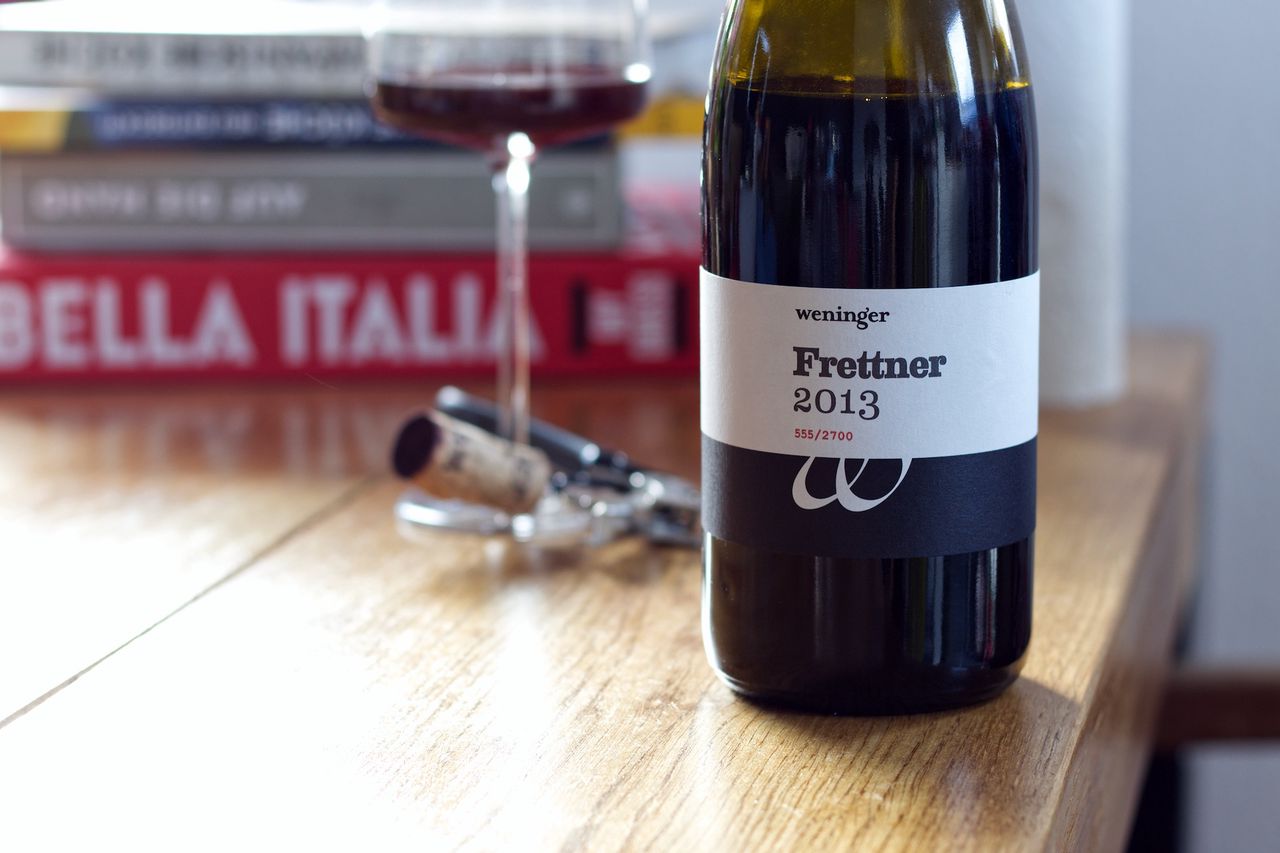Weninger - Frettner 2013
We drink from the Weninger Winery a Cabernet Franc Frettner 2013 from Hungary.

The Weninger Winery is located in Horitschon not far from Lake Neusiedl in the Austrian Burgenland and also in the Hungarian Balf, which lies between Horitschon and Lake Neusiedl. And relatively in the middle of the air line Horitschon and Lake Neusiedl, very close to Balf, is the Frettner site in the municipality of Sopron overlooking the lake. Actually, Blaufränkisch dominates here as a red grape variety and this is also the case in Weninger’s assortment. However, we have Cabernet Franc from 2013 in the glass today. Franz Weninger is now responsible for the wines in the winery, but the connection to Hungary goes back to his father. He founded a winery relatively quickly after the fall of the Berlin Wall and the then open borders in the south of Hungary on the Croatian border in collaboration with Attila Gere in 1992. Cabernet Franc has been grown there since the late 19th century, which is a nice bridge to today’s wine. The land around Sopron was then purchased in 1997 and became part of Weninger. After initial success, difficult years followed, especially around the crisis of 2008. But the switch to biodynamic farming and the focus on spontaneously fermented, more elegant wines with less wood and less intervention in the cellar, which was not accepted at first, was at the same time the cornerstone for the success of the wines today. The Cabernet Franc grows in the Frettner site on loamy soils on the edge of a forest. It is harvested by hand, fermented spontaneously and then aged in used wooden barrels. In 2013, 2700 bottles were filled.
The wine smells dry, a bit smoky and cool. There’s vanilla, leather, scrub and black currants. It’s rustic at the same time, yet somehow also very elegant and polished. In the mouth, the tannin still resists, but at the same time is really well integrated. And again, the wine is rather cool, juicy and a bit rustic. It starts really strong and although it has nine years under its belt, you don’t really notice it at all.
With air, everything becomes rounder, a little bit more flattering. Whereby it was already that anyway in his rusticity. A bit like a rustic pub, with its worn wooden benches, hard but so well seated that it is super comfortable. The tannins soften, but never really velvety either. The slightly greenish scrub knows how to prevent that well. Instead it gains in fruit, which becomes more and riper. Plum is there and dark cherry. The wine lives totally from this edge that it has, this minimal inappropriateness that runs through everything, through the fruit, the tannin, the spice, the acidity, everywhere.
After a night in the open bottle, you get the feeling that as the tannin softens, the wine develops more and more freshness and acidity. This is not a fruit wine, although it has fruit, and this is not easy drinking, although it has become so juicy. This is a wine full of contrasts and yet perfectly round. I like it very much.